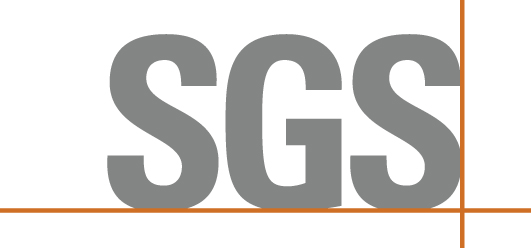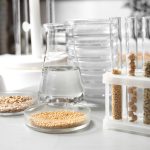SGS Seed and Crop News: June 2020
In this edition of SGS Seed and Crop Canada News:
- Rapid Scissor Cut Test to Optimize Forage Quality
- Soil and Seed Reclamation Analysis To Meet Sustainability Targets
- SGS Global Precision Agriculture Presence
RAPID SCISSOR CUT TEST TO OPTIMIZE FORAGE QUALITY
High quality forage is essential to dairy profitability. The benchmark for “high producing dairy cow” quality alfalfa haylage is considered to be 20% Crude Protein (CP), 30% Acid Detergent Fiber (ADF), and 40% Neutral Detergent Fiber (NDF).
Many nutritionists consider NDF to be the primary quality variable to target. Optimum alfalfa NDF for intake and dietary fiber is about 40%. This is considered a good balance between the conflicting goals of digestible energy, protein utilization, adequate dietary fiber (rumen function) and yield per acre. Ideally, the haylage should be 40% NDF at about the mid-point of the harvest.
Research has shown that NDF can vary from one year to the next by up to 10 percentage units when cutting is on the same date. The relationship between morphological stage (such as early- or late-bud stage) and NDF is not always as high as we might think. When to begin cutting is always a difficult decision. Some tools are better than others.
Our “Rapid Scissor Cut” test is a quick NIR analysis providing feeding advisors with CP, ADF, NDF and RFV, to help optimize cutting date, with test results available the day following sample receipt. Courier and lab fees are inexpensive relative to feed bills!
Contact us for sampling instructions at CA.SeedandCrop@sgs.com
SOIL AND SEED RECLAMATION ANALYSIS TO MEET SUSTAINABILITY TARGETS
Renewal and sustainability efforts are forefront during the summer months. Test results determine a broad base of actions including sanitation, access, remediation, and certification. We have an extensive portfolio of service deliverables critical from initial assessment to compliance confirmation. Learn about our diagnostic analysis:
Clubroot: PCR and qPCR detection of Plasmodiophora brassicae in soil & tissue
Soil Seed Analysis: Quantification of seed bank (weeds, crop species) in soil
Soil Nutrient Analysis: Micro and macro nutrients, pH, organic matter, organic carbon, calcium, base saturation, cation exchange capacity, total salts, chloride, sodium, sodium absorption ratio, aluminum
Soil Physical Analysis: Texture (sand, silt, clay), Sand fraction (particle size distribution), foreign matter (glass, plastic, metal), bulk density, hydraulic conductivity/permeability, aggregate stability
Seed Quality: Germination and physical purity testing of reclamation seed blends
Get pricing for soil and seed analysis at CA.SeedandCrop@sgs.com)
SGS GLOBAL PRECISION AGRICULTURE PRESENCE
No matter how a producer is utilizing precision agriculture, it usually requires decision making based on a laboratory analysis. Soil testing based on yield regions, variable rate prescription maps for fertilizer or limestone based on georeferenced soil samples, variable seed population determined by soil type or organic matter, and targeted foliar applications based on remote imagery and tissue analysis are four examples.
SGS Canada has over 25 years of experience performing georeferenced sampling and prescription map-making. Globally, SGS is building precision farming and fertility management solutions. Our experts support you to improve soil productivity, effectiveness and sustainability. Learn more about our solutions, watch our tutorials and experts’ videos to keep you up to date with the latest techniques.
Discover more about our global precision agriculture initiative at https://www.sgs.com/en/campaigns/precision-agriculture





